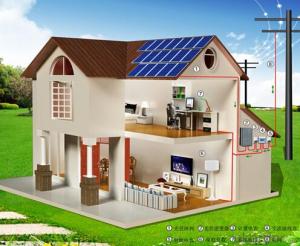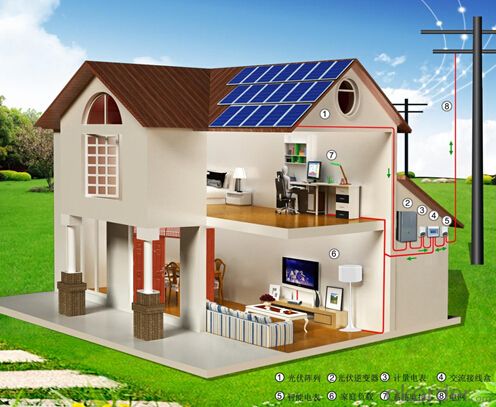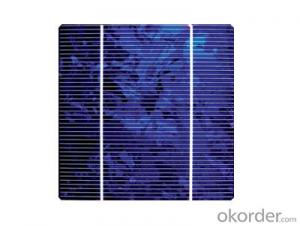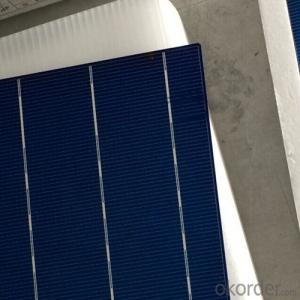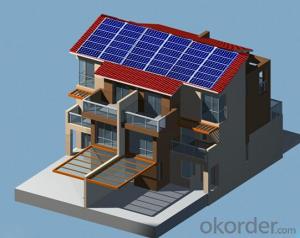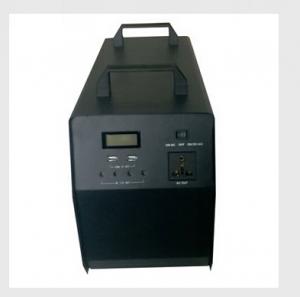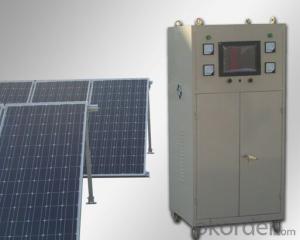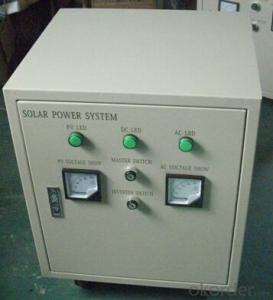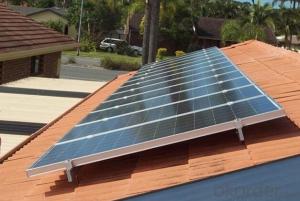Solar Energy CNBM Solar Roof Solar System 10000W with High-Efficiency Solar Cells - Popular in Africa
- Loading Port:
- Shanghai
- Payment Terms:
- TT OR LC
- Min Order Qty:
- 1 PCS
- Supply Capability:
- 3000 PCS/month
OKorder Service Pledge
OKorder Financial Service
You Might Also Like
Introduction of Solar Home System
Solar arrays are designed to provide specified amounts of electricity under certain conditions. The following factors are usually considered when determining array energy performance:
Characterization of solar cell electrical performance
Determination of degradation factors related to array design and assembly
Conversion of environmental considerations into solar cell operating temperatures
Calculation of array power output capability.
The amount of electricity required may be defined by any one or a combination of the following performance criteria:
Power output -- power (Watts) available at the power regulator, specified either as peak power or average power produced during one day.
Energy output -- the amount of energy (Watt-hour or Wh) produced during a certain period of time. The parameters are output per unit of array area (Wh/m²), output per unit of array mass (Wh/kg), and output per unit of array cost (Wh/$).
Conversion efficiency -- defined as "energy output from array" ÷ "energy input from sun" × 100%.
This last parameter is often given as a power efficiency, equal to "power output from array" ÷ "power input from sun" × 100%. Power is typically given in units of Watts (W), and energy is typically in units of Wh, or the power in Watts supplied during an hour.
To ensure the consistency and quality of PV systems and increase consumer confidence in system performance, various groups -- such as the Institute of Electrical and Electronics Engineers (IEEE), the International Electrotechnical Commission (IEC), and the American Society for Testing and Materials (ASTM) -- are working on standards and performance criteria for PV systems.
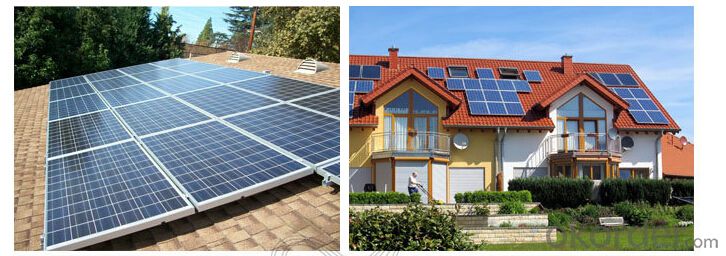


Working Principle of Solar Roof System
The stand alone Solar Home System is an off-grid solar system which uses batteries to store the solar energy. Stand alone solar system solutions design for those who are not able or willing to connect to electricity grid.
Specification of Solar Home System
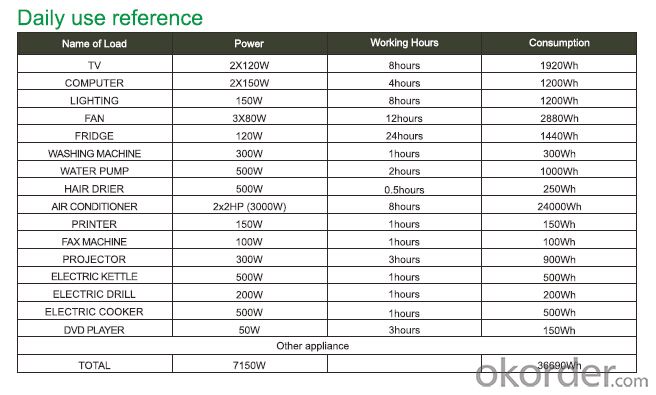
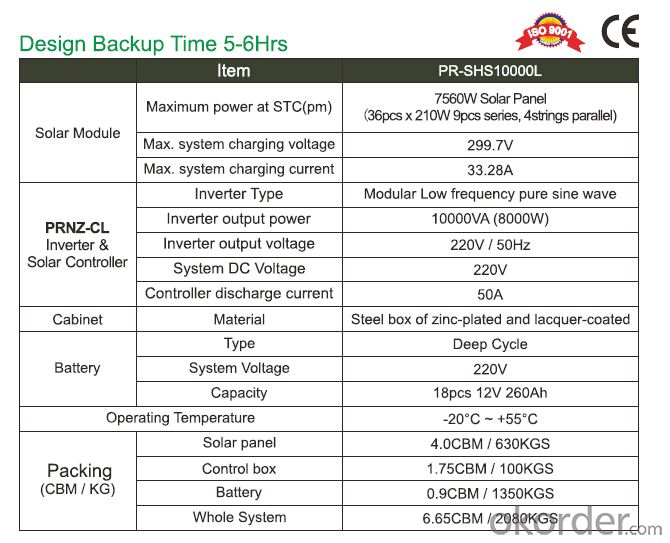
Product Features of Solar Home System
1. Off grid solar power system is mainly used for application with relatively-small power consumption, and the areas have no grid network coverage, or grid power is unstable or outage condition.
2. It’s composed of solar panels, hybrid solar inverter, battery bank, solar panel mounting racks, and other accessories required fora complete home solar power system.
3. The battery bank gives a stable power output to the solar inverter which converts DC to AC to power loads, and provides power backup in rainy or cloudy days.
4. The solar panels generate electricity at daytime and charge the battery bank.
5. The off grid home solar power system provides grid power bypass in case of battery power shortage when sunshine is not enough.
6. All the off grid home solar power system configurations are worked out by scientific calculation and design.
Advantage of Our Solar Home System
1 Excellent Performance: Our Solar Home System is composed by Brand Standard Kits with high quality. Our solar system has the advantage of high efficiency and stable operation. We can ensure our product with a long life period.
2. Small Orders Accepted: We can accept small orders as our customer’s trial order.
3. Warehouse: We have warehouse overseas which can bring great convenience to our customer to pick up the products.
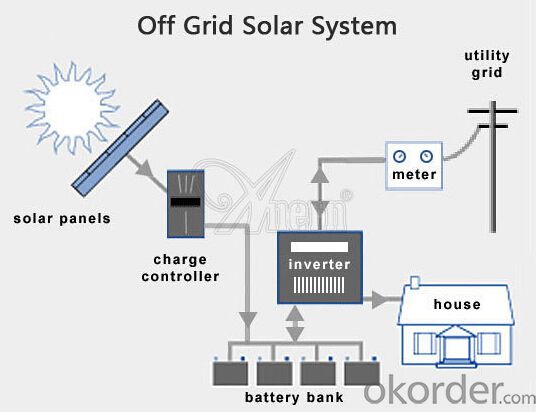
Terms and Conditions
1. Trade terms: FOB Shanghai
2. Payment terms: 30% T/T, balanced before shipment/ LC at sight before shipment. Actual Terms can be negotiated for big order.
3. Package: Exported standard package suitable for tough handling and sea transport.
4. Delivery: Goods to be ready within 10~30 days depending on order quantity.
5. Warranty: 10 years for solar panel, 2 years for controller/inverter/battery.
FAQ
Q: Could you introduce the background of your company?
A: We are a Group corp. with 1GW capacity in China, which is Okorder’s registered VIP Supplier, possess Financial Service from Okorder.com.
Q: Required mainly certificates (CE&IEC/TUV/RoHS)?
A: Our products are certificated by CE RoHS, IEC, ISO, TUV, UL etc.
Q: Your main exported market is?
A: Main markets of our products is: South-east Asia, Mid-east, Arica, East Europe and Latin America.
- Q: Can solar cells be used in high-altitude areas?
- Yes, solar cells can be used in high-altitude areas. In fact, solar cells can be even more effective in high-altitude regions due to the increased intensity of sunlight and reduced air pollution.
- Q: Can solar cells be used for military applications?
- Yes, solar cells can be used for military applications. They can provide a reliable and independent source of power for various military equipment, including remote surveillance systems, communication devices, and even powering military bases or remote outposts. Solar cells offer the advantage of being lightweight, portable, and environmentally friendly, making them suitable for a range of military operations and reducing reliance on traditional fuel sources.
- Q: How do solar cells perform in areas with high levels of water pollution?
- Solar cells can be adversely affected by high levels of water pollution. Water pollution can reduce the efficiency of solar cells by blocking sunlight and reducing the amount of light that reaches the surface of the cells. Additionally, pollutants in the water can corrode the surfaces of solar cells and damage their components, leading to a decrease in performance and lifespan. Therefore, in areas with high levels of water pollution, solar cells may not perform optimally and require more frequent maintenance and cleaning to ensure their effectiveness.
- Q: How do solar cells perform in areas with limited space for installation?
- Solar cells can still perform efficiently in areas with limited space for installation through the use of innovative technologies such as rooftop and building-integrated photovoltaics. These systems maximize the use of available space, allowing solar cells to generate electricity even in compact urban environments. Additionally, advancements in solar cell design and efficiency have made it possible to produce more power from smaller areas, further optimizing electricity generation in limited spaces.
- Q: Can solar cells be used in air conditioning systems?
- Yes, solar cells can be used in air conditioning systems. Solar cells can generate electricity from sunlight, which can then power the air conditioning unit, reducing the reliance on traditional energy sources and making the system more environmentally friendly and cost-effective.
- Q: Can solar cells be used for powering remote communication towers?
- Yes, solar cells can be used to power remote communication towers. Solar panels can be installed on the towers or nearby to capture sunlight and convert it into electricity. This renewable energy source is ideal for remote locations where access to traditional power grids may be limited or costly. Solar cells can provide a reliable and sustainable power supply for remote communication towers, enabling them to function efficiently.
- Q: What is the role of voltage regulators in solar cell systems?
- The role of voltage regulators in solar cell systems is to regulate and control the voltage output from the solar panels to ensure it remains within a specific range that is suitable for the connected devices or batteries. This helps prevent overcharging, which can damage the devices or batteries, and ensures optimal performance and efficiency of the solar cell system.
- Q: Can solar cells be used for off-grid living?
- Yes, solar cells can definitely be used for off-grid living. They provide a clean and reliable source of renewable energy, allowing individuals to generate their own electricity without relying on the traditional power grid. Solar cells can be used to power various appliances, lighting systems, and even charge batteries for nighttime usage. This makes solar energy an ideal solution for those living in remote areas or seeking a sustainable and independent lifestyle.
- Q: Can the solar powered cells really work better than the normal cells?
- Because of the different ways of generating the power, the solar powered cells definitely better than the normal cells in the modern world.
- Q: How much space is required to install solar cells?
- The amount of space required to install solar cells can vary depending on factors such as the size and efficiency of the solar panels, the energy needs of the location, and the available sunlight. However, on average, it is estimated that 10 to 20 square meters of space is typically needed to install a kilowatt of solar panels.
Send your message to us
Solar Energy CNBM Solar Roof Solar System 10000W with High-Efficiency Solar Cells - Popular in Africa
- Loading Port:
- Shanghai
- Payment Terms:
- TT OR LC
- Min Order Qty:
- 1 PCS
- Supply Capability:
- 3000 PCS/month
OKorder Service Pledge
OKorder Financial Service
Similar products
Hot products
Hot Searches
Related keywords
